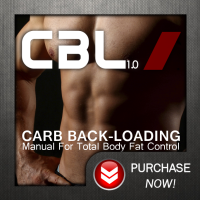I’ve read some interesting articles lately making liberal reference to the term “K-Bombs.” Judging by the content of these pieces, I naturally thought this stood for krock-of-shit bombs—which would be highly appropriate but for the fact that crock is spelled with a ‘c,’ and not a ‘k.’ I did a little more research on this terminology, and I discovered that a K-Bomb is a “knowledge bomb.”
I checked the calendar, and it wasn’t April Fool’s Day—which surprised me, because when so-called “authors” recycle and reuse the sort of anecdotal garbage I was reading, then attempt to pedal it as actual knowledge, I’m always looking around for hidden cameras. The joke has to be on us, right?
With that said, I thought I’d ante-up with some Friday K-Squared-Bombs, where you can think of the K-Squared as a Kiefer-Knowledge Bomb. Or Knowledge-Squared—because it’s essentially the same thing.
1. Ketosis and Ketogenesis Are Different.
People often confuse these two terms and their meanings. Ketogenesis occurs whenever your body makes ketones from fat[1]. This is a normal, daily process. When you first wake up in the morning, you’re ketogenic. When you exercise, you’re ketogenic and during long fasts—or, more specifically, for long periods without carbs in your diet—you’re ketogenic[2-12]. Your body makes ketones. This means you’re ketogenic. We’re all ketogenic at least once during a normal day (during the nighttime fast).
Ketosis, in contrast, is the abnormal situation where your body produces more ketones than it uses, and excretes them through urine, sweat, and feces. Not everyone goes through ketosis, and it’s actually an unreliable way to tell whether you’re burning fat or not[7]. This is also why, in a seemingly counterintuitive turn, having a carb back-load can ignite ketosis as it shuts down ketogenesis. The sudden rush of glucose means the body can no longer use the ketones, so it starts flushing them from the system (thereby making poor Atkins turn over in his grave).

She’s obviously not happy that she has to train longer for the same fat burning effect as a dude, but her hard work is paying off in the end.
2. Women burn more fat during exercise than men.
When women exercise they tend to preserve muscle glycogen stores and burn more fat[13-15]. Caveat Emptor: once women stop training, the fat burning stops, too[16]. For men, however, training burns off more glycogen and creates a fat-burning window of time that extends for up to 21 hours, which explains why men burn more fat than women over the course of exercise programs[17]. This is why prolonged, high-intensity training is better for women if getting rid of body fat is the goal.
3. MetCons don’t help the body burn more fat.
As with everything CrossFit touches, they fucked this one up too. The whole metabolic conditioning craze is one of the stupidest things going. Despite CrossFit’s overlord’s contention that “science is stupid,” there’s a shit-ton of research to show their way doesn’t work. Research has clearly shown that rest periods of 1 to 3 minutes between sets stimulate the most fat burning during resistance training[18-24]. Resting for 30 seconds or less minimizes this effect[24]. So, the next time anyone says, “Don’t rest between sets,” go ahead and take your sweet time.
4. Your body can create new fat cells over the course of your life, but it takes ten years for them to die.
Contrary to popular belief, the body can make new fat cells throughout your entire life if you give it the right hormonal and nutritional environment[25-28]—which, as Americans, we pretty much do every day from sunrise to sunset. The downside, however, is that fat cells are robust little bastards and don’t die easily. Scientists used to think they were vampires, sucking our lifeblood for an eternity, but recent advances in radio-isotope marking of living tissue discovered that fat cells will die, but the process takes about ten years[29].
The issue with this, however, is that if the fat cell is full, a new fat cell springs into existence to replace it. This means that to permanently lose body fat, you need to keep fat cells empty for a decade or longer until they expire. It’s a good reason to take the weight off and keep it off.
NOTE: There may be another way to kill these uglies by creating a special hormonal environment found with The Carb Nite® Solution, but this has only been shown in animals thus far[30-34]. And by “uglies,” I’m referring to fat cells. Dieting, unfortunately, won’t fix your face.

Forget that Paleo crap: eat the white rice instead. (Robb Wolf’s probably spinning in his grave too…oh, wait, I think he’s still alive.)
5. White rice is the cleanest food you can eat for a carb back-load.
As I discussed in a recent article about all the potentially harmful chemicals that plants produce—particularly the ones we eat—I didn’t mention the few things that don’t contain much in the way of potentially harmful chemicals: white rice and white flour[35]. Since flour contains gluten, which 50% of people have some degree of allergy to[36], white rice is the clear winner.
6. You can use Carb Back-Loading™ without resistance training.
Yes, your jaw just dropped, and you threw in a “Holy shit.” Research has shown that you don’t need to resistance train to make CBL work[37-38]. Of course, your food choices won’t be nearly as fun, and it’s only been shown to work during calorie deficit, but there’s still something very powerful about cycling macronutrients as described in the Carb Back-Loading™ book.
7. Cortisol is a fat burner.
Cortisol’s main function in the body is to cause tissue breakdown, but it decides which tissue to destroy based on what you eat. If you eat carbs, it’ll destroy muscle when the opportunity arises. When you don’t eat carbs, it destroys fat stores instead[39-44]. This is why it’s absolutely critical that you avoid carbs first thing in the morning when cortisol levels peak[39,45].
So there you have it: your first series of K-Squared-Bombs. Unfortunately, these will probably surface all over the internet as the newest series of “original” k-bombs offered by other authors because that’s how the fitness gangstas rolls. Such is life. But if you want access to the bleeding edge instead of waiting for it to trickle down through the fitness-world sludge, then stay tuned for the next exciting installment of K-Squared-Bombs, found only on DangerouslyHardcore.com.
Featured Image by: runofthemill
References (click to expand)
- Fukao T, Lopaschuk GD, Mitchell GA. Pathways and control of ketone body metabolism: on the fringe of lipid biochemistry. Prostaglandins Leukot Essent Fatty Acids. 2004 Mar;70(3):243-51. Review.
- Fery F, Balasse EO. Ketone body production and disposal in diabetic ketosis. A comparison with fasting ketosis. Diabetes. 1985 Apr;34(4):326-32. -4-7-
- Koeslag JH, Noakes TD, Sloan AW. The effects of alanine, glucose and starch ingestion on the ketosis produced by exercise and by starvation. J Physiol. 1982 Apr;325:363-76. -4-15-
- Schreiber RA, Yeh YY. Temporal changes in plasma levels and metabolism of ketone bodies by liver and brain after ethanol and/or starvation in C57BL/6J mice. Drug Alcohol Depend. 1984 Mar;13(2):151-60. -5-1-
- Fery F, Balasse EO. Ketone body turnover during and after exercise in overnight-fasted and starved humans. Am J Physiol. 1983 Oct;245(4):E318-25. -5-11-
- Bougneres PF, Ferre P. Study of ketone body kinetics in children by a combined perfusion of 13C and 2H3 tracers. Am J Physiol. 1987 Nov;253(5 Pt 1):E496-502. -5-19-
- Reichard GA Jr, Owen OE, Haff AC, Paul P, Bortz WM. Ketone-body production and oxidation in fasting obese humans. J Clin Invest. 1974 Feb;53(2):508-15. -5-22-
- Koeslag JH. Post-exercise ketosis and the hormone response to exercise: a review. Med Sci Sports Exerc. 1982;14(5):327-34. Review. -3-8-
- Fery F, Balasse EO. Response of ketone body metabolism to exercise during transition from postabsorptive to fasted state. Am J Physiol. 1986 May;250(5 Pt 1):E495-501. -5-24-
- Askew EW, Dohm GL, Huston RL. Fatty acid and ketone body metabolism in the rat: response to diet and exercise. J Nutr. 1975 Nov;105(11):1422-32. -11-8-
- Wahren J, Hagenfeldt L. Free fatty acid and ketone body metabolism during exercise in diabetes. Acta Paediatr Scand Suppl. 1980;283:39-44.
- Fery F, Bourdoux P, Christophe J, Balasse EO. Hormonal and metabolic changes induced by an isocaloric isoproteinic ketogenic diet in healthy subjects. Diabete Metab. 1982 Dec;8(4):299-305.
- Roepstorff C, Steffensen CH, Madsen M, Stallknecht B, Kanstrup IL, Richter EA, Kiens B. Gender differences in substrate utilization during submaximal exercise in endurance-trained subjects. Am J Physiol Endocrinol Metab. 2002 Feb;282(2):E435-47.
- Mittendorfer B, Horowitz JF, Klein S. Gender differences in lipid and glucose kinetics during short-term fasting. Am J Physiol Endocrinol Metab 2001; 281 (6): E1333-9.
- Tarnopolsky MA. Sex differences in exercise metabolism and the role of 17-beta estradiol. Med Sci Sports Exerc 2008; 40 (4): 648-54.
- Henderson GC, Fattor JA, Horning MA, Faghihnia N, Johnson ML, Mau TL, Luke-Zeitoun M, Brooks GA. Lipolysis and fatty acid metabolism in men and women during the postexercise recovery period. J Physiol. 2007 Nov 1;584(Pt 3):963-81.
- Donnelly JE, Smith BK. Is exercise effective for weight loss with ad libitum diet? Energy balance, compensation, and gender differences. Exerc Sport Sci Rev 2005; 33 (4): 169-74.
- Kraemer WJ, Fleck SJ, Dziados JE, Harman EA, Marchitelli LJ, Gordon SE, Mello R, Frykman PN, Koziris LP, Triplett NT. Changes in hormonal concentrations after different heavy-resistance exercise protocols in women. J Appl Physiol. 1993 Aug;75(2):594-604.
- Kraemer WJ, Dziados JE, Marchitelli LJ, Gordon SE, Harman EA, Mello R, Fleck SJ, Frykman PN, Triplett NT. Effects of different heavy-resistance exercise protocols on plasma beta-endorphin concentrations. J Appl Physiol. 1993 Jan;74(1):450-9.
- Kraemer WJ, Marchitelli L, Gordon SE, Harman E, Dziados JE, Mello R, Frykman P, McCurry D, Fleck SJ. Hormonal and growth factor responses to heavy resistance exercise protocols. J Appl Physiol. 1990 Oct;69(4):1442-50.
- Pincivero DM, Lephart SM, Karunakara RG. Effects of rest interval on isokinetic strength and functional performance after short-term high intensity training. Br J Sports Med. 1997 Sep;31(3):229-34.
- Matuszak ME, Fry AC, Weiss LW, Ireland TR, McKnight MM. Effect of rest interval length on repeated 1 repetition maximum back squats. J Strength Cond Res. 2003 Nov;17(4):634-7.
- Augustsson J, Thomee R, Hornstedt P, Lindblom J, Karlsson J, Grimby G. Effect of pre-exhaustion exercise on lower-extremity muscle activation during a leg press exercise. J Strength Cond Res. 2003 May;17(2):411-6.
- Haltom RW, Kraemer RR, Sloan RA, Hebert EP, Frank K, Tryniecki JL. Circuit weight training and its effects on excess postexercise oxygen consumption. Med Sci Sports Exerc. 1999 Nov;31(11):1613-8.
- Prins JB, O’Rahilly S. Regulation of adipose cell number in man. Clin Sci (Lond). 1997 Jan;92(1):3-11. Review.
- Faust IM, Miller WH Jr, Sclafani A, Aravich PF, Triscari J, Sullivan AC. Diet-dependent hyperplastic growth of adipose tissue in hypothalamic obese rats. Am J Physiol. 1984 Dec;247(6 Pt 2):R1038-46.
- Miller WH Jr, Faust IM, Hirsch J. Demonstration of de novo production of adipocytes in adult rats by biochemical and radioautographic techniques. J Lipid Res. 1984 Apr;25(4):336-47.
- Marques BG, Hausman DB, Martin RJ. Association of fat cell size and paracrine growth factors in development of hyperplastic obesity. Am J Physiol. 1998 Dec;275(6 Pt 2):R1898-908.
- Arner E, Westermark PO, Spalding KL, Britton T, Rydén M, Frisén J, Bernard S, Arner P. Adipocyte turnover: relevance to human adipose tissue morphology. Diabetes. 2010 Jan;59(1):105-9.
- Loftus TM, Kuhajda FP, Lane MD. Insulin depletion leads to adipose-specific cell death in obese but not lean mice. Proc Natl Acad Sci U S A. 1998 Nov 24;95(24):14168-72.
- Gullicksen PS, Hausman DB, Dean RG, Hartzell DL, Baile CA. Adipose tissue cellularity and apoptosis after intracerebroventricular injections of leptin and 21 days of recovery in rats. Int J Obes Relat Metab Disord. 2003 Mar;27(3):302-12.
- Qian H, Azain MJ, Compton MM, Hartzell DL, Hausman GJ, Baile CA. Brain administration of leptin causes deletion of adipocytes by apoptosis. Endocrinology. 1998 Feb;139(2):791-4.
- Choi YH, Li CL, Hartzell DL, Della-Fera MA, Baile CA. Central effects of rat versus mouse leptin: ingestive behavior and adipose apoptosis. Domest Anim Endocrinol. 2003 Oct;25(3):295-301.
- Commins SP, Watson PM, Frampton IC, Gettys TW. Leptin selectively reduces white adipose tissue in mice via a UCP1-dependent mechanism in brown adipose tissue. Am J Physiol Endocrinol Metab. 2001 Feb;280(2):E372-7.
- Ames BN, Profet M, Gold LS. Dietary pesticides (99.99% all natural). Proc Natl Acad Sci U S A. 1990 Oct;87(19):7777-81.
- Sicherer SH. Determinants of systemic manifestations of food allergy. J Allergy Clin Immunol. 2000 Nov;106(5 Suppl):S251-7. Review.
- Sofer S, Eliraz A, Kaplan S, Voet H, Fink G, Kima T, Madar Z. Greater weight loss and hormonal changes after 6 months diet with carbohydrates eaten mostly at dinner. Obesity (Silver Spring). 2011 Oct;19(10):2006-14.
- Sofer S, Eliraz A, Kaplan S, Voet H, Fink G, Kima T, Madar Z. Changes in daily leptin, ghrelin and adiponectin profiles following a diet with carbohydrates eaten at dinner in obese subjects. Nutr Metab Cardiovasc Dis. 2012 Aug 14.(Epub ahead of print)
- Samra JS, Clark ML, Humphreys SM, Macdonald IA, Matthews DR, Frayn KN. Effects of morning rise in cortisol concentration on regulation of lipolysis in subcutaneous adipose tissue. Am J Physiol. 1996 Dec;271(6 Pt 1):E996-1002.
- Nishiyama M, Makino S, Suemaru S, Nanamiya W, Asaba K, Kaneda T, Mimoto T, Nishioka T, Takao T, Hashimoto K. Glucocorticoid effects on the diurnal rhythm of circulating leptin levels. Horm Res. 2000;54(2):69-73.
- Rebuffe-Scrive M, Lonnroth P, Andersson B, Smith U, Bjorntorp. Effects of short-term administration on the metabolism of human subcutaneous adipose tissue. J Obes Weight Regul. 1988;7:22-33.
- Fain JN. Inhibition of glucose transport in fat cells and activation of lipolysis by glucocorticoids. In: Baxter JD, Rousseau GG, eds. Glucocorticoid hormone action. Berlin, Heidelberg, New York 1979:Springer-Verlag;547-560.
- Felig P, Baxter JD, Frohman LA. Endocrinology and Metabolism. New York 1995:McGraw-Hill.
- Dinneen S, Alzaid A, Miles J, Rizza R. Metabolic effects of the nocturnal rise in cortisol on carbohydrate metabolism in normal humans. J Clin Invest. 1993 Nov;92(5):2283-90.
- Edwards S, Evans P, Hucklebridge F, Clow A. Association between time of awakening and diurnal cortisol secretory activity. Psychoneuroendocrinology. 2001 Aug;26(6):613-22.








Recent Comments